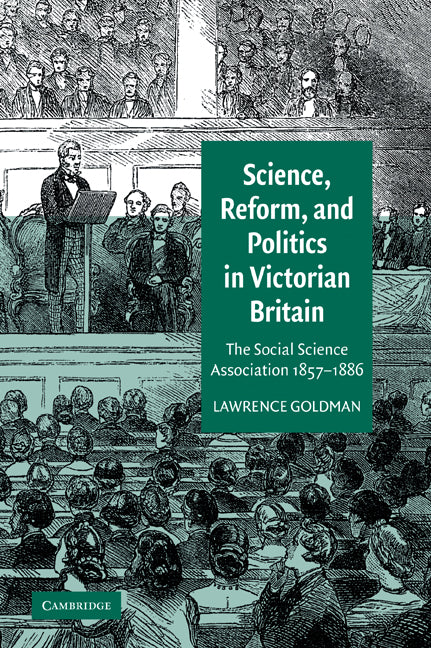Freshly Printed - allow 8 days lead
Couldn't load pickup availability
Science, Reform, and Politics in Victorian Britain
The Social Science Association 1857–1886
Goldman examines the origins of social policies, focusing on the Social Science Association.
Lawrence Goldman (Author)
9780521036511, Cambridge University Press
Paperback / softback, published 30 April 2007
448 pages, 8 b/w illus.
22.8 x 15 x 2.8 cm, 0.667 kg
'… immaculately researched and lively … This study of the life and work of the social Science Association, is more than just and institutional history. It provides a valuable insight into the particular conditions and concerns of mid-Victorian Britain and will undoubtedly prove essential reading for the considerable academic audience on this period.' History
This book is a study of the relationships between social thought, social policy and politics in Victorian Britain. Goldman focuses on the activity of the National Association for the Promotion of Social Science, known as the Social Science Association. For three decades this served as a forum for the discussion of Victorian social questions and as an influential adviser to governments, and its history discloses how social policy was made in these years. The Association, which attracted many powerful contributors, including politicians, civil servants, intellectuals and reformers, had influence over policy and legislation on matters as diverse as public health and women's legal and social emancipation. The SSA reveals the complex roots of social science and sociology buried in the non-academic milieu of nineteenth-century reform. And its influence in the United States and Europe allows for a comparative approach to political and intellectual development in this period.
List of illustrations
Acknowledgements
Note on citations in the text
List of abbreviations
Introduction: the contexts of the Social Science Association
Part I. Politics: 1. The origins of the Social Science Association: legal reform, the reformation of juveniles, and the property of married women in 'the Age of Equipoise'
2. The Social Science Association and the structure of mid-Victorian politics
3. Organising the Social Science Association
Part II. Reform: 4. Liberalism divided and feminism divided: women and the Social Science Association
5. Transportation, reformation and convict discipline: the Social Science Association and Victorian penal policy 1853–71
6. Victorian socio-medical liberalism: the Social Science Association and state medicine
7. Labour and capital: the Social Science Association, trade unionism, and industrial harmony
8. The Social Science Association and middle-class education: secondary schooling, endowments, and professionalism in mid-Victorian England
9. The Social Science Association and the making of social policy
Part III. Science: 10. Social science in domestic context: popular science, sociology, and a 'science of reform'
11. Social science in comparative international context
Part IV. Decline: 12. The decline of the Social Science Association: Liberal division, specialisation, and the end of Equipoise
Conclusion: the Social Science Association and social knowledge
Appendices
Select bibliography
Index.
Subject Areas: Social theory [JHBA], History of ideas [JFCX], Modern history to 20th century: c 1700 to c 1900 [HBLL], British & Irish history [HBJD1]


